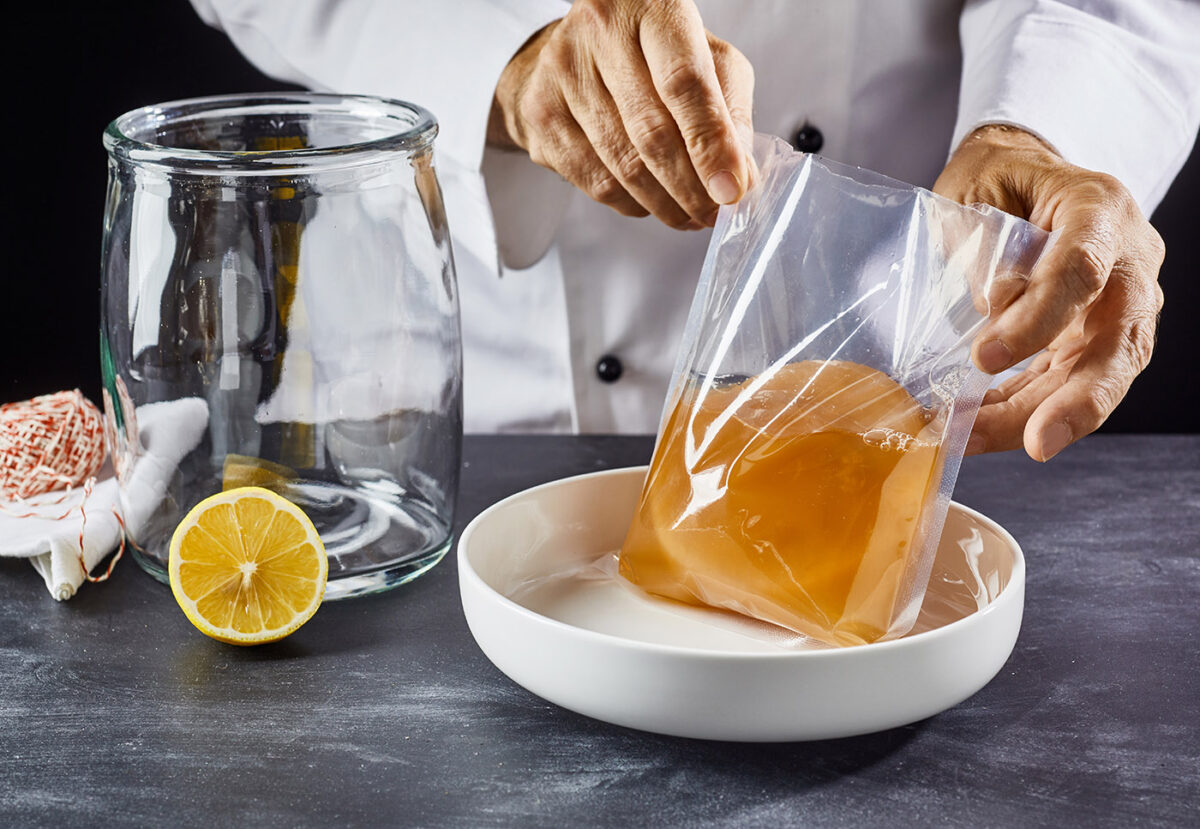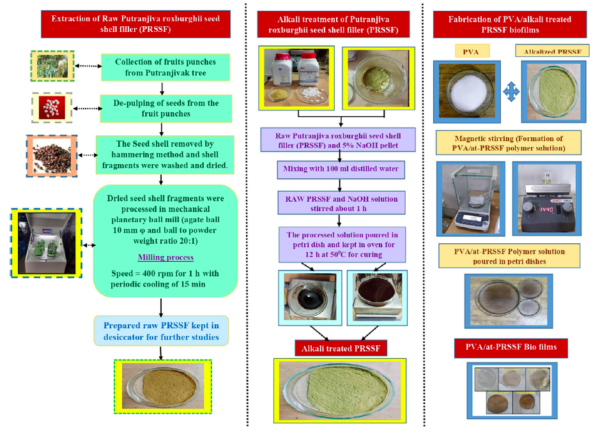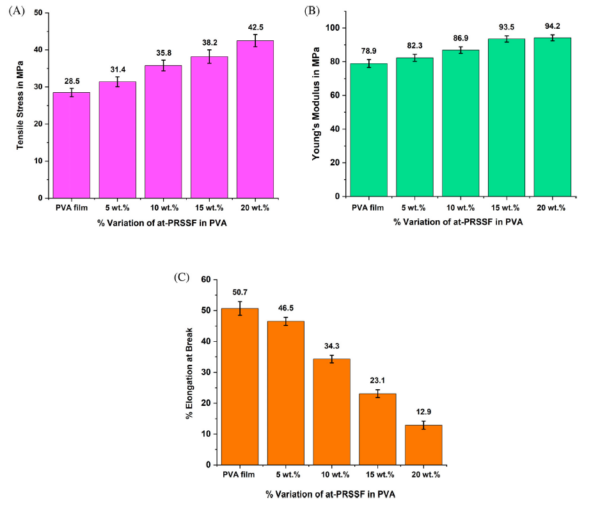Advancing PVA Biofilms with Natural Seed Shells

Researchers enhanced PVA biofilms with Putranjiva Roxburghii seed shells (PRSS), improving biodegradability and properties for eco-friendly packaging.
Biopolymers and biofillers offer viable alternatives to petroleum-based plastics to produce eco-packaging solutions. Polyvinyl alcohol (PVA) biofilms with natural fillers are promising due to their biodegradability and enhanced mechanical properties.
You can also read: Mango Materials Transforms Waste Methane into PHA
Enhancing PVA Biofilms with PRSS Fillers
Researchers in Asia studied using Putranjiva roxburghii seed shells (PRSS) as a filler for PVA biofilms. They used PVA, known for its film-forming abilities and high water permeability but limited degradability, and combined it with alkali-treated Putranjiva roxburghii seed shell bio-filler (at-PRSSF). This improved the degradation properties of the PVA biofilms, presenting a solution for eco-friendly packaging materials.
PVA/at-PRSSF Biofilm Fabrication
The fabrication process of PVA/at-PRSSF involves extracting PRSSF from Putranjiva roxburghii seeds and treating it with alkali. This enhances its compatibility with the PVA matrix, facilitating stronger interactions with PVA molecules. The treated PRSSF is dispersed in a PVA solution through mechanical stirring at elevated temperatures for uniform distribution and bonding. The PVA/at-PRSSF solution is then cast into molds or substrates and cured to form thin, flexible biofilms.

Preparation, alkali treatment of PRSSF, and fabrication of PVA/at-PRSSF biofilms. Courtesy of Effect of alkali-treated Putranjiva roxburghii seed shell filler on physico-chemical, thermal, mechanical, and barrier properties of polyvinyl alcohol-based biofilms.
Researchers prepared five samples for each proportion of matrix and filler (5%, 10%, 15%, and 20%). After characterization and testing, the PVA biofilms with 20% at-PRSSF showed the best results.
Improving Molecular Interactions
Physico-chemical characterization reveals crucial insights into the molecular interactions within PVA/at-PRSSF biofilms. FTIR analysis shows improved compatibility between the high-cellulosic alkali-treated PRSSF and the PVA matrix, due to interactions involving OH groups. This enhances the mechanical and barrier properties, crucial for packaging applications. XRD analysis confirmed that the at-PRSSF filler improved the crystallinity of the biofilms.
Increasing Thermal Performance
Thermal stability is vital for packaging materials intended for hot-fill or high-temperature storage. Thermal analysis of PVA/at-PRSSF biofilms shows significant improvements in heat resistance compared to pure PVA films. The highly crystalline at-PRSSF filler increases the maximum degradation temperatures of the biofilms. Biofilms with 20% at-PRSSF exhibit a maximum degradation temperature of 334.8°C, indicating robust thermal performance for demanding packaging applications.
Tensile Strength and Flexibility on the Balance
Mechanical strength is essential for packaging materials to withstand handling, transport, and storage. Tensile testing reveals significant enhancements in the mechanical properties of PVA/at-PRSSF biofilms. Adding 20% at-PRSSF increases tensile strength by 32.94% and Young’s modulus by 16.24% compared to pure PVA films, improving structural integrity and toughness. However, the percentage elongation at break decreases with higher at-PRSSF content, affecting the biofilms’ flexibility.

Tensile properties (A) tensile strength, (B) Young’s modulus, and (C) percentage elongation at break of pure polyvinyl alcohol (PVA) and PVA biofilms with PRSSF. Courtesy of Effect of alkali-treated Putranjiva roxburghii seed shell filler on physico-chemical, thermal, mechanical, and barrier properties of polyvinyl alcohol-based biofilms.
Upgrading Barrier Protection
Effective barrier properties are crucial for packaging materials to prevent moisture ingress and protect contents from UV radiation. UV transmittance tests show that PVA/at-PRSSF biofilms have significantly lower transmittance values at 280 nm (T280) and 600 nm (T600) wavelengths compared to pure PVA films. This indicates enhanced UV protection, making these biofilms suitable for light-sensitive products. Additionally, the at-PRSSF filler reduces water vapor transmission rates (WRC). Biofilms with 20% at-PRSSF show an 88.38% decrease in WRC compared to pure PVA films, highlighting improved moisture barrier properties.
PVA biofilms reinforced with at-PRSSF represent a promising advancement in sustainable packaging materials. The fabrication process enhances their physico-chemical, thermal, mechanical, and barrier properties, making them suitable for various packaging applications. Further research in this field could lead to broader adoption of bio-based materials, contributing to environmental sustainability and reducing reliance on non-renewable resources in the packaging industry. Innovations like PVA/at-PRSSF biofilms offer a compelling solution to meet environmental and functional requirements in packaging design and production.
Read the full article in the SPE Journal of Vinyl & Additives for detailed insights.
